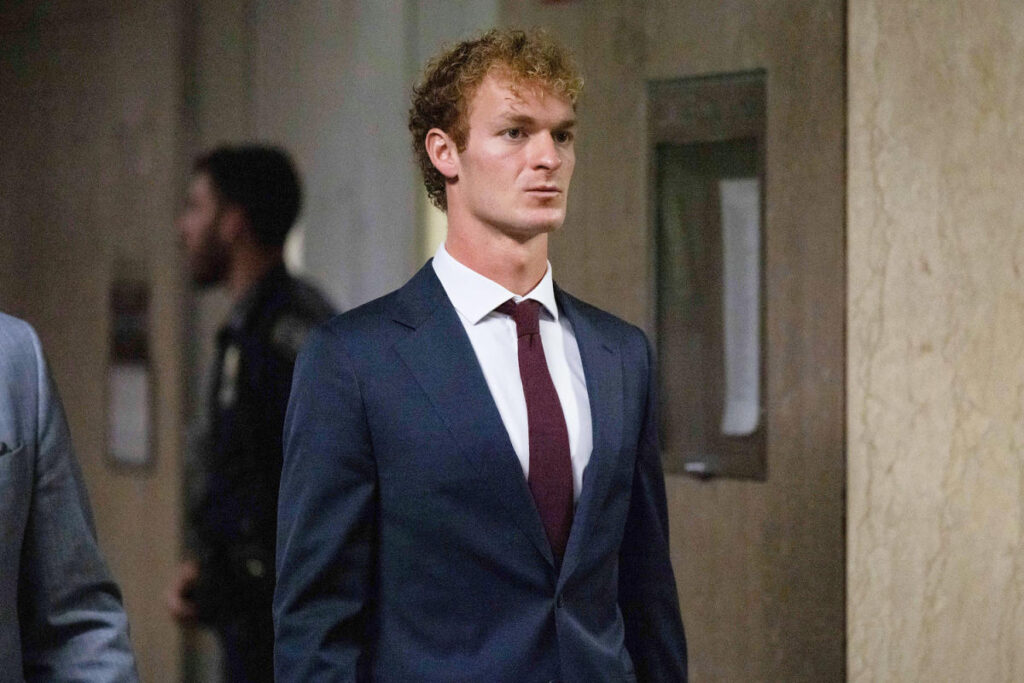The case surrounding Daniel Penny, who faced criminal charges in the harsh 2023 death of Jordan Neely, has generated considerable public interest and legal scrutiny, touching upon sensitive topics such as race, public safety, and mental health. The prosecution argued that Penny, a white Marine veteran, exceeded reasonable limits of self-defense when he restrained Neely, a 30-year-old Black man experiencing mental health issues, on a New York City subway. Though the jury was deliberating on the charges, the top count of second-degree manslaughter was dismissed when jurors indicated they could not reach a unanimous decision. This decision allows the jurors to now focus on the lower charge of criminally negligent homicide, which could result in a maximum of four years in prison for Penny, a significant reduction from the potential 15 years associated with the manslaughter charge had he been convicted.
The incident that led to Neely’s death became the focal point of a broader conversation about the implications of vigilantism, societal responsibility toward individuals with mental health issues, and the demographics of those involved. Neely boarded the subway and expressed his distress, prompting panic among passengers as he vocalized his frustrations and needs, reportedly stating he was hungry and wished to return to prison. Witnesses attested that Penny intervened, placing Neely in a chokehold that ultimately led to Neely’s death. Video footage later surfaced showing that even after the train had stopped, Penny maintained his hold on Neely, raising questions about the appropriateness and legality of his actions.
Penny’s defense team contended that his actions were meant to protect fellow passengers, arguing that they were reasonable responses to a perceived threat. They contended that Neely’s underlying health issues and alleged substance abuse were the primary culprits in his death rather than Penny’s restraint. The prosecution, however, countered that once Neely ceased being a threat, Penny’s extended hold transformed from a protective act to one of recklessness, thus crossing the line into criminally negligent behavior. This dichotomy of viewpoints illustrates the complexities inherent in the case and the varied interpretations of responsible action in high-stress situations.
The legal intricacies of the trial included debates over whether the prosecution should have the right to drop the top charge, which might be a basis for an appeal if Penny is found guilty of the lesser charge. Jurors, faced with the responsibility of determining the moral and legal implications of Penny’s intervention, struggled with their decision; the dismissal of the more serious charge indicates the difficulty in addressing the nuances of culpability in such fraught circumstances. As deliberations resume, the focus shifts to whether Penny’s actions constituted a failure to acknowledge Neely’s humanity or if they were appropriate given the circumstances.
This trial puts on display the multifaceted challenges faced by urban populations, particularly regarding how society handles mental health crises in the public sphere. Penny’s case has raised awareness and prompted discussions on the role of individuals in responding to such crises—whether taking action is necessary for public safety or if it risks exacerbating already vulnerable situations. The racial dynamics at play add another layer of complexity, as differing perceptions of threat and agency are often influenced by deeply entrenched societal attitudes and biases.
As the jury prepares to continue deliberations, the outcome may resonate beyond the immediate case, influencing public perception and legal standards concerning self-defense and intervention in volatile situations. The focus soon will shift to whether the jury will see Penny as a well-intentioned person caught in a distressing event or as an individual who made a grievous error in judgment that resulted in a tragic outcome. Ultimately, the resolution of this case might redefine expectations of personal responsibility and societal care in contexts where mental health intersects with public safety.

